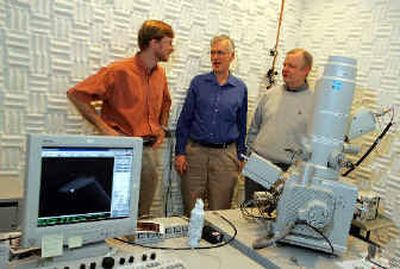Researchers propose alternative to transistors

SAN JOSE, Calif. — Challenging a basic tenet of the semiconductor industry, researchers at Hewlett-Packard Co. have demonstrated a technology that could replace the transistor as the fundamental building block of all computers.
The devices, called crossbar latches, could be made so small that thousands of them could fit across the diameter of a human hair, enabling the high-tech industry to continue to build ever-smaller computing devices that are less expensive than their predecessors.
For years, engineers have been able to pack more and more smaller transistors onto a fingernail-size silicon chip. The rate of integration, first predicted by Intel Corp. co-founder Gordon Moore in 1965, has driven computer performance and prices for more than 30 years.
But the pace of Moore’s Law can’t continue forever, and the high-tech industry has been scrambling to develop workarounds for the day — expected in a decade or so — when transistor dimensions become too small for the materials commonly used today.
“If we’re going to extend Moore’s Law for another several decades, we’ve got to have an alternative strategy,” said Phil Kuekes, one of the paper’s authors at HP Labs. “This is the final piece of the puzzle in what HP has been putting together as such a strategy.”
The smallest features of today’s silicon-based transistors are about 90 nanometers long, a nanometer being roughly one hundred-thousandth the width of a human hair. The crossbar latch, by comparison, can work in a space of about 2 to 3 nanometers.
The HP research, reported in today’s Journal of Applied Physics, scraps the transistor entirely. In its place is basically a series of platinum wires crossed opposite directions.
“It’s metal and molecules. Nothing else,” Kuekes said. “We’re getting away from the physics of silicon.”
Like in a transistor, an electrical signal that passes through a crossbar latch is manipulated to perform logic functions. The latest research shows that the technology also can be used for amplifying a signal, allowing multiple functions to be applied.
“The power of this device is not when it’s by itself. It’s when it glues together other pieces of logic,” said Duncan Stewart, another HP Labs scientist and study co-author. “As soon as you’re able to do that, we call that a computer.”